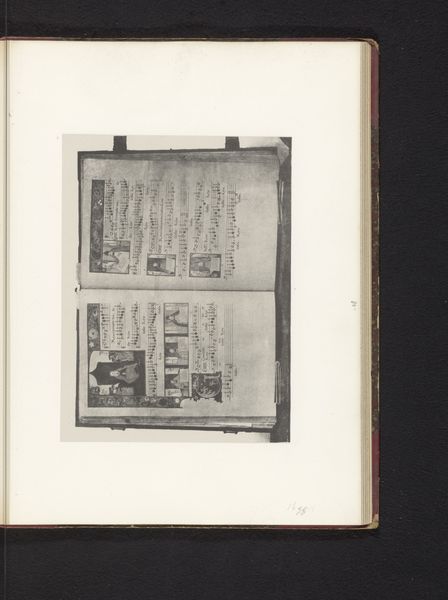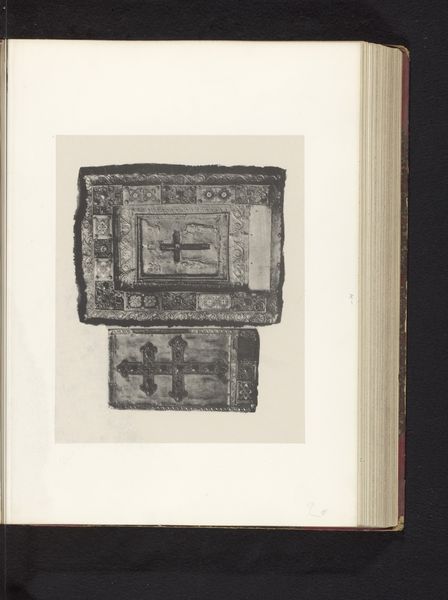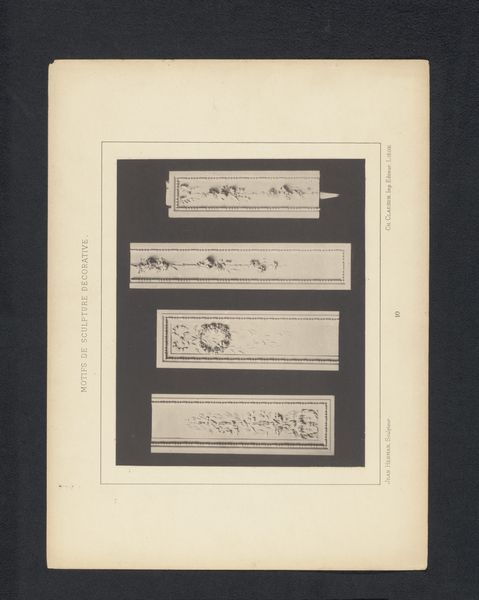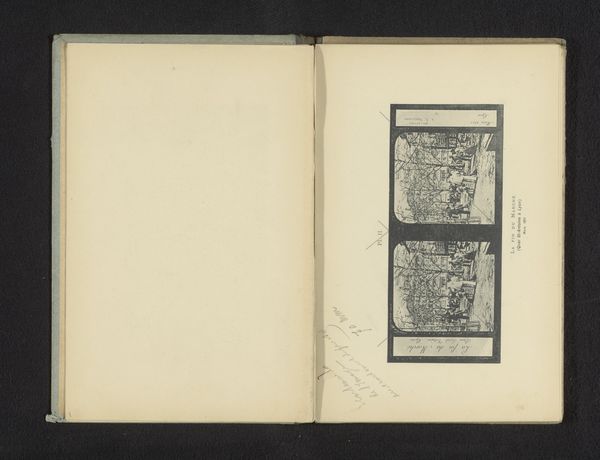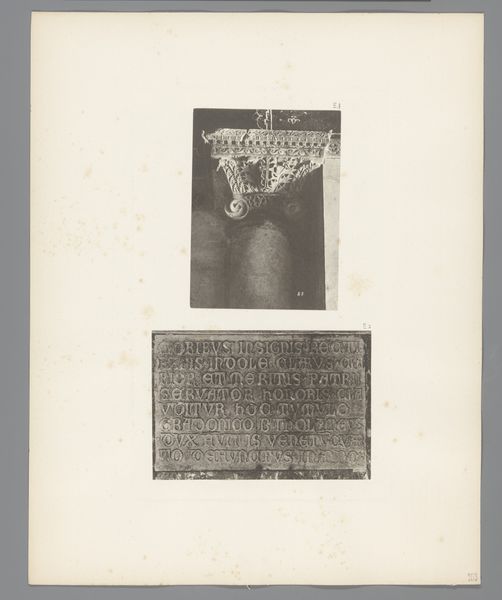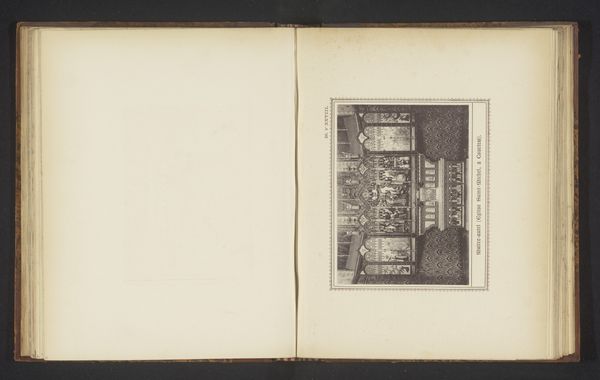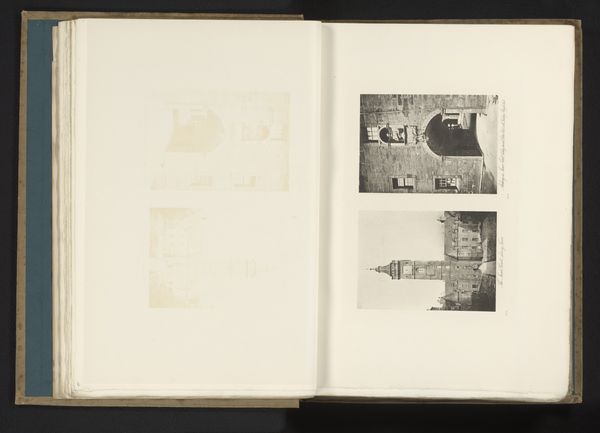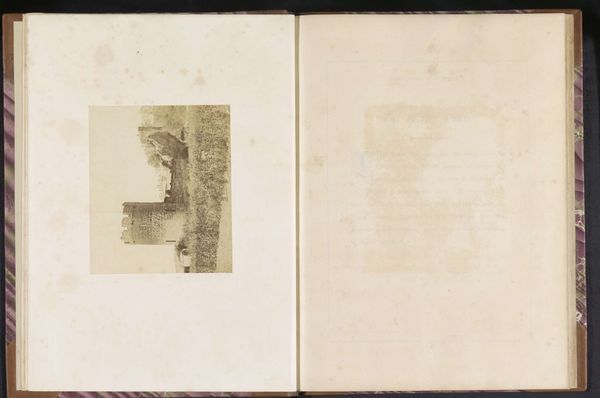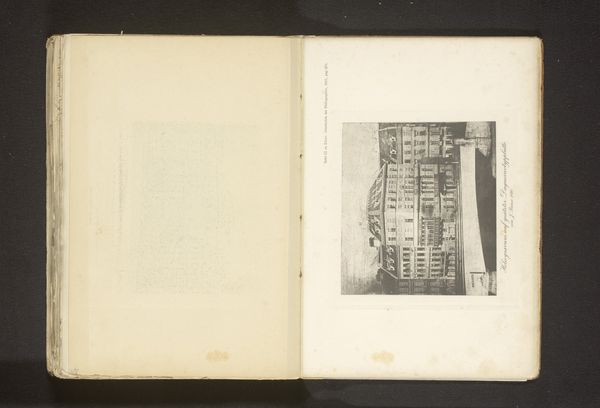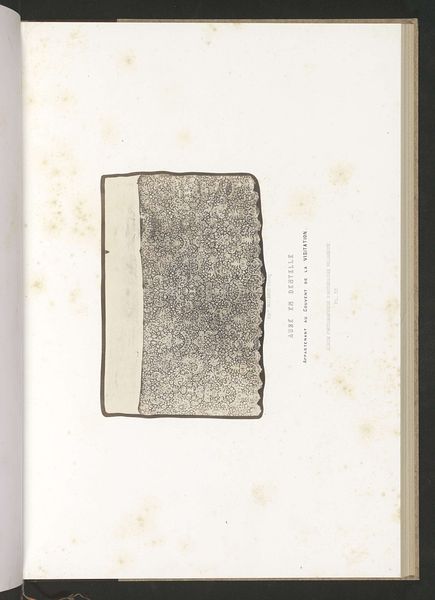
Dimensions: height 380 mm, width 300 mm
Copyright: Rijks Museum: Open Domain
Curator: Let's explore "Oude Handschriften," a drawing, print, and etching on paper, crafted sometime between 1857 and 1865 by an anonymous artist. It’s currently held in the Rijksmuseum collection. Editor: My first thought? These images, especially with their monochromatic rendering, exude a certain antiquated fragility, yet also the solidity of an artifact meant to last. I'm drawn to the level of detail achieved. Curator: Absolutely. It draws deeply from Romanticism and academic art, styles preoccupied with idealizing the past. We see here a reverence for handwritten manuscripts—portals to knowledge and faith of prior eras. Each embellished initial, floral border, and carefully rendered script carried profound significance. The image makes visible cultural memory. Editor: It makes me consider the sheer labor involved in the creation of the original manuscripts. Look at the density of those letters. But also, the layered process required to produce this reproduction. It's anonymous work that preserves, represents, and transforms other anonymous work. This print becomes an artifact *about* artifacts. Curator: Yes! And notice the visual weight given to illuminated elements versus pure text. The upper image evokes heavenly scenes while the lower focuses more on earthly life, perhaps suggesting the spiritual hierarchy embedded in medieval worldviews. This reflects a particular sensibility. Editor: The choice to render the image via print allows for a kind of democratic circulation. The materiality of etching makes the sacred—texts once reserved and available only through laborious, specialized making—accessible to many in the age of mechanical reproduction. It prompts questions about value, labour, and knowledge. Curator: Precisely. What might be considered lost knowledge—the symbolism and allegories layered within those manuscripts—can be accessed through sustained viewing, inviting the beholder to connect deeply across centuries with cultural tradition. Editor: For me, this prompts a meditation on the journey of information from hand-scribed texts to the printing press to the digital age we're now immersed in. It brings a focus on our changing relationship to books and making, in a moment when that tradition is fading from experience. Curator: Thank you, that material perspective provides additional insight into the legacy contained in this remarkable print. Editor: It’s been fascinating to consider the many hands that touched these words and images over time.
Comments
No comments
Be the first to comment and join the conversation on the ultimate creative platform.
